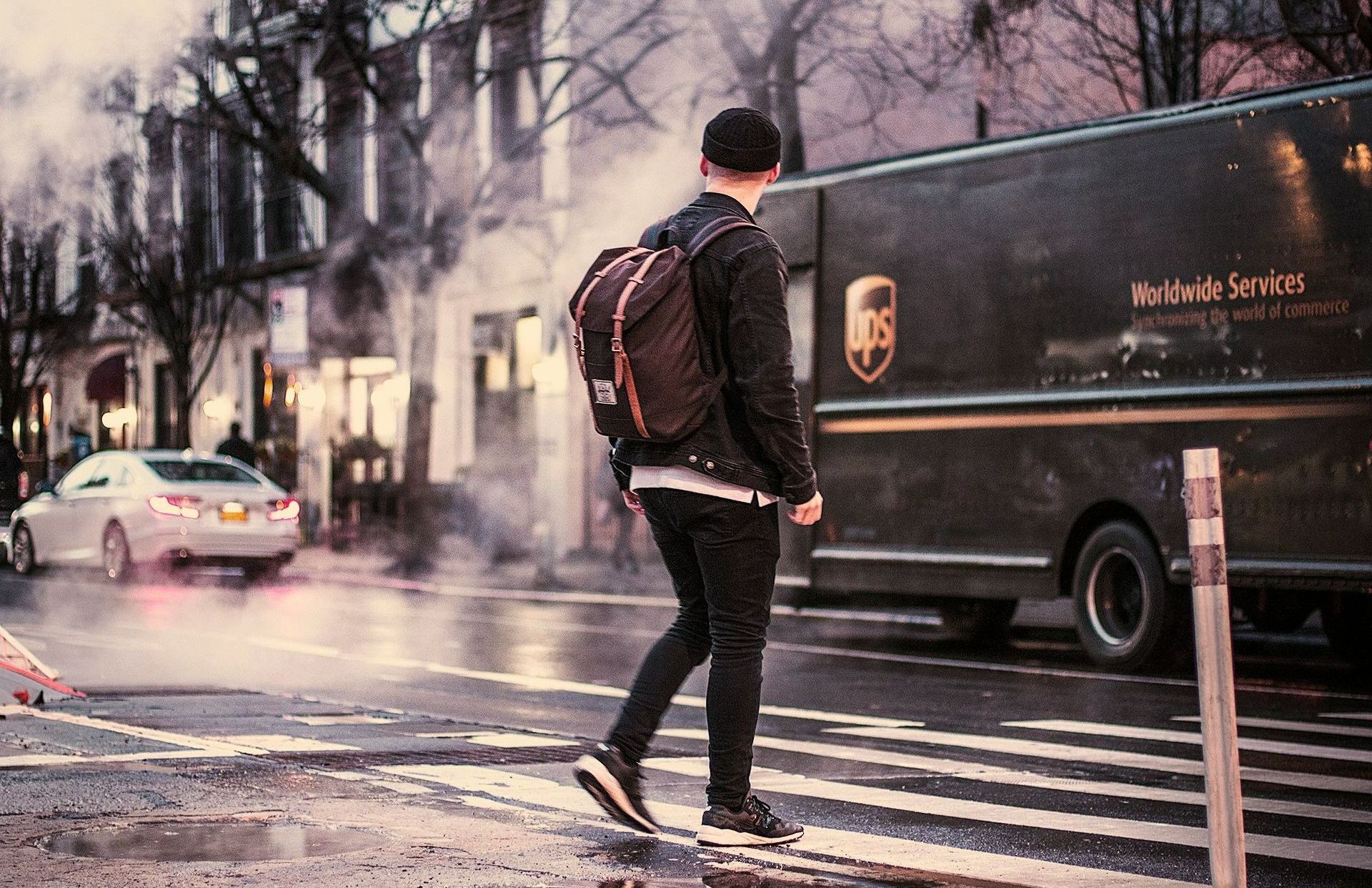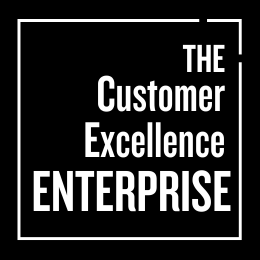The Customer Excellence Enterprise: A Playbook for Creating Customers for Life,
Part 1/6. An Open Letter to Starbucks: The Starbucks Customer Excellence Series
CASE-IN-POINT: From a Customer: An Open Letter to Starbucks
BOLD MOVE: Leadership (LDR) Bold Move #4: Model Customer-Centric Behaviors; Operational (OPS) Bold Move #1: Reimagine the Concept of Operations
☕️ Part 1/6 From a Customer: An Open Letter to Starbucks
Synopsis. Presented as a letter from a long-time customer, this case examines Starbucks' (intentional or unintentional) shift from its original comfort-oriented "third place" brand proposition to a scale, speed, and efficiency-driven approach emphasizing mobile ordering, drive-thrus, and delivery. While these modern modalities cater to today’s convenience-seeking consumers, they risk eroding the emotional resonance that has long defined the brand. The dissonance caused by these contrasting experiences underscores a fundamental challenge for Starbucks: maintaining a balance between the demands of convenience-oriented customers and preserving the comforting coffeehouse experience cherished by its legacy audience. Failing to bridge this gap could result in brand inconsistency, leaving customers feeling betrayed and abandoned, questioning whether Starbucks sees them simply as financial transactions or if they are truly valued for their long-term loyalty.
Dear Starbucks,
I miss you. Sure, it’s normal that we’ve both changed and moved on over the years. But you have REALLY changed…so much that I hardly recognize you. Nostalgia for my go-to extra shot grande latte has inspired me to share a few concerns weighing heavily on me. I’m compelled to reach out because I think that the current state of affairs in our relationship (yes, our break-up and my defection from you) isn’t from malicious intent but from some terrible misunderstanding or, better yet, a miscalculation:
Believing that what you offered me, why you earned a place in my heart, mind, and life, and what drew so many like me to you in the first place, was just about the coffee.
The reality is, as the definition of a commodity, coffee is and has always been available virtually everywhere—often cheaper, faster, stronger, and perhaps even fancier at local artisan coffeehouses and at insurgent premium brands that are trying to clean your clock. Recognizing the transactional, unemotional nature of selling coffee as a commodity, in your origin story, you created, marketed, and delivered a distinctive Starbucks Experience defined by "coffeehouse community and comfort" and placed it at the very heart of your brand ethos and promise.
Yes, you won me over based on the Seattle "coffeehouse vibe".
As the core experiential factors that you built your business and our relationship on, community and comfort manifested in the coffeehouse vibe through the low hum of quiet conversation, the gentle hiss of steaming milk, the chill background music, the aroma of freshly ground beans, and witty baristas. With intention and design, the magic of the Starbucks Experience was in the idea of lingering over a cup or two, the invitation to sit with a book, hold a caffeine-fueled study group, or flip through a newspaper or tablet. Whether we did so or not, the invitation was there. You offered the promise of a pause, a moment of reflection, a bit of tranquility. Yes, the coffeehouse vibe you sold me created a feeling of stepping out of the fast pace of daily life into a place where time slowed down just a little bit, a respite from the game.
Our relationship also carried over into the workplace as the “coffee run” ritual became synonymous with you as your coffeehouses became a sanctuary, a few minutes of a retreat from the grind. Contrasting sharply with grabbing a cup at a fast food joint, convenience store, or gas station, the unique, brand-specific interpretation of the coffeehouse you offered created a certain mystique and charm that showed up as my strong preference and willingness to invite you into my life. Your carefree atmosphere made coffee a secondary actor in the overall experiential story you were telling and selling, emotions and connections that, for many of us, held irreplaceable places in our lives.
But no longer.
It feels like somewhere along the way, that essence was lost. Maybe it was trying to appeal to everyone with the introduction of a dizzying array of drinks (many of which were not and are not coffee!). Perhaps the pivotal moment happened in 2011, when you dropped the word “Coffee” from your logo, signaling your desire to expand your scope and evolve into a broader “lifestyle brand.” At a minimum, with this particular decision, you granted yourself permission to redefine what you could be—no longer tethered exclusively to your origins as a coffeehouse but open to exploring new possibilities that are better aligned with your global growth aspirations. In the end, your proposition seems to have shifted from a unique, community, and comfort-driven coffeehouse experience to one built around maximizing convenience through scale, speed, and efficiency — focusing on throughput and how quickly customers can be moved through the system and how many cups can be sold per hour.
Honestly, at some level I “get it”…you had to "do what you had to do" to meet the elevated expectations of your investors and other stakeholders. But I get the sense that it’s not quite so simple...
No, of course not…your current situation is complex and highly nuanced. The many critics suggesting that you have simply forgotten about customer experience probably come across as oversimplified and unfounded inside the walls of the company. After all, you can argue and show tangible evidence that you have actually remained laser-focused on the experience of your legions of customers. Specifically, your mobile app alone is a testament to your continued commitment to customer experience, offering a clean digital interface, intelligent recommendations, and intuitive navigation that allows busy customers like me to effortlessly order and pay in seconds, skip long lines, and earn rewards along the way.
Moreover, your emphasis on adjusting store layouts and workflows to support drive-thrus, mobile orders, and delivery pick-ups are clear and tangible reflections of your positioning as a leader in modern convenience and store efficiency. So, with the elevated levels of scale and speed that you now provide, it’s understandable why the accusations that you are no longer focused on the customer experience are viewed and dismissed by you as gratuitous distractions.
But, wait just a minute…the Starbucks Experience is now defined by scale, speed, and efficiency? What happened to “community and comfort”? Did you change the essence of the Starbucks brand but forgot to tell us?
Yes, the strategic shift away from community and comfort to scale, speed, and efficiency as your guiding ethos has inadvertently distanced the Starbucks Experience from your original brand promise. From your Pike Place origin story, you distinguished yourself as my “third place” between my home and work, offering a comfortable, community-centered coffeehouse environment where I could linger, connect, and just breathe, even if it was just for a few minutes.
Your pivot to scale, speed, and efficiency—while undoubtedly successful, and probably a legitimate strategic necessity— has subtly but definitively redefined what the Starbucks Experience means and what your brand stands for. But, this redefinition, while it may have been exceedingly wise and rational, was never explicitly communicated to me and other loyal customers...it just sorta happened. Perhaps this lack of transparency is the root of it all.
This sound yet poorly articulated strategic move has created a fundamental gap between the expectations that we jointly set as the bedrock of our relationship many years ago and the unfamiliar terrain in which we now find ourselves.
What’s the big deal, you ask?
To me, this gap isn’t trivial; it’s elemental— when there is dissonance between what a brand like Starbucks promises and what it actually delivers, like any consumer, I can’t help but feel a sense of betrayal. Based on the historical brand messaging and proposition that you served up to me, I became used to viewing you as a source of community and a comforting refuge. However, with your new emphasis on scale, speed, and efficiency, the Starbucks Experience seems to have gone from a coffeehouse to a "coffee factory", an unfamiliar and somewhat jarring reality that conflicts with the ethos that I have previously associated with the brand. As my only recourse, this breach of trust deeply impacts my loyalty to you as I actively search for and explore different options to replace your role in my daily life.
Now, for the good news.
More recently, it’s clear that Starbucks is in the midst of a thoughtful and visible turnaround. The brand’s latest commercials mark a refreshing pivot—refocusing on what originally made it iconic: the store experience, the artistry of the baristas, and the ritual of savoring a handcrafted coffee. Rather than leading with logistics—like mobile orders, drive-thrus, or pick-up mechanics—these new spots reassert the primacy of human connection and sensory atmosphere. But this shift won’t be easy. Delivering consistently on this more expansive, experience-led promise across a landscape of digital, physical, and hybrid touchpoints will require deep structural and systemic change. Rewiring systems, retraining teams, and realigning incentives to prioritize brand-defining moments over operational throughput is a heavy lift—but a necessary one if Starbucks is to fully recapture its emotional relevance and reclaim its role as the third place in a modern world.
In summary, can't tell you what the answer is…all one can do is tell you what it isn’t.
Sincerely,
A. Customer
[A Long-Time Customer]
Questions to Consider.
- How can Starbucks effectively balance modern convenience-oriented offerings (e.g., mobile orders, delivery services) with the comfort-oriented experience that its legacy customers value? What strategies can they implement to avoid alienating either customer segment?
- What are the potential risks of Starbucks prioritizing convenience over its original brand promise of comfort and community? How might these risks impact customer loyalty and brand perception in the long term?
- To what extent can Starbucks’ embrace of technology, such as the mobile app and AI, enhance customer experience without compromising the brand's emotional resonance? How should the company ensure these advancements align with its core values?
- What role does customer feedback play in resolving the tension between coffeehouse and coffee factory at Starbucks?
- How can Starbucks use this feedback to avoid the inconsistency that might harm its brand identity?
- How can Starbucks differentiate itself in a competitive market while maintaining the authenticity of its brand?
- Should the company focus more on expansion for broader appeal or doubling down on its original "third place" concept?
Read the other parts of The Starbucks Customer Excellence Series:
Part 1: From A Customer: An Open Letter to Starbucks
Part 2: Societal Savior or Customer Experience Death Star
Part 3: Recapturing the Starbucks Mystique
Part 4: Redefine the Starbucks Culture Platform
Part 5: Reconstruct the Starbucks Brand Pyramid
Part 6: Redesign the Experience Delivery System
To learn more about leadership, organizational, operational, and commercial bold moves, order
“The Customer Excellence Enterprise: A Playbook for Creating Customers for Life”

[PRACTICE NOTE] The Next Chapter of Commercial Excellence in Pharma: The Rise of Customer Excellence










